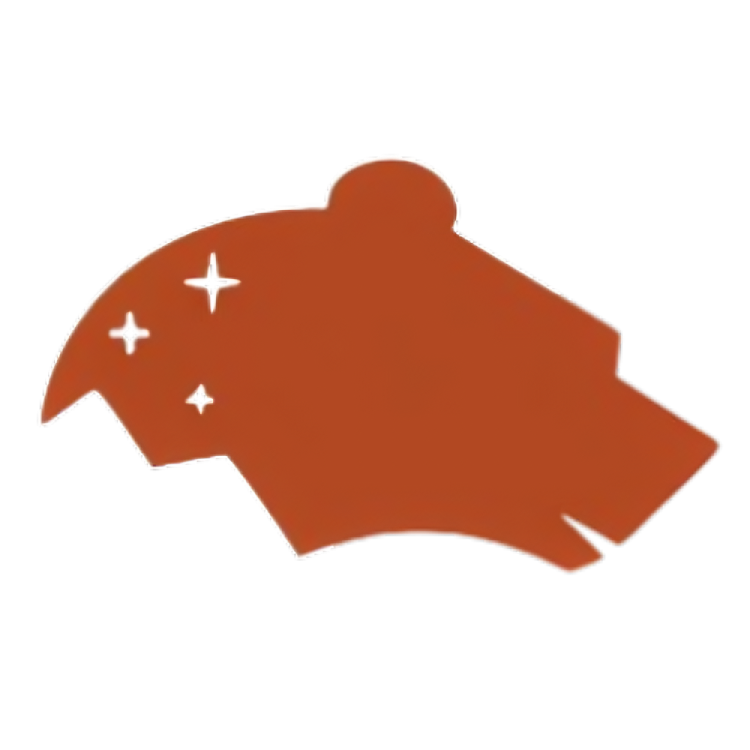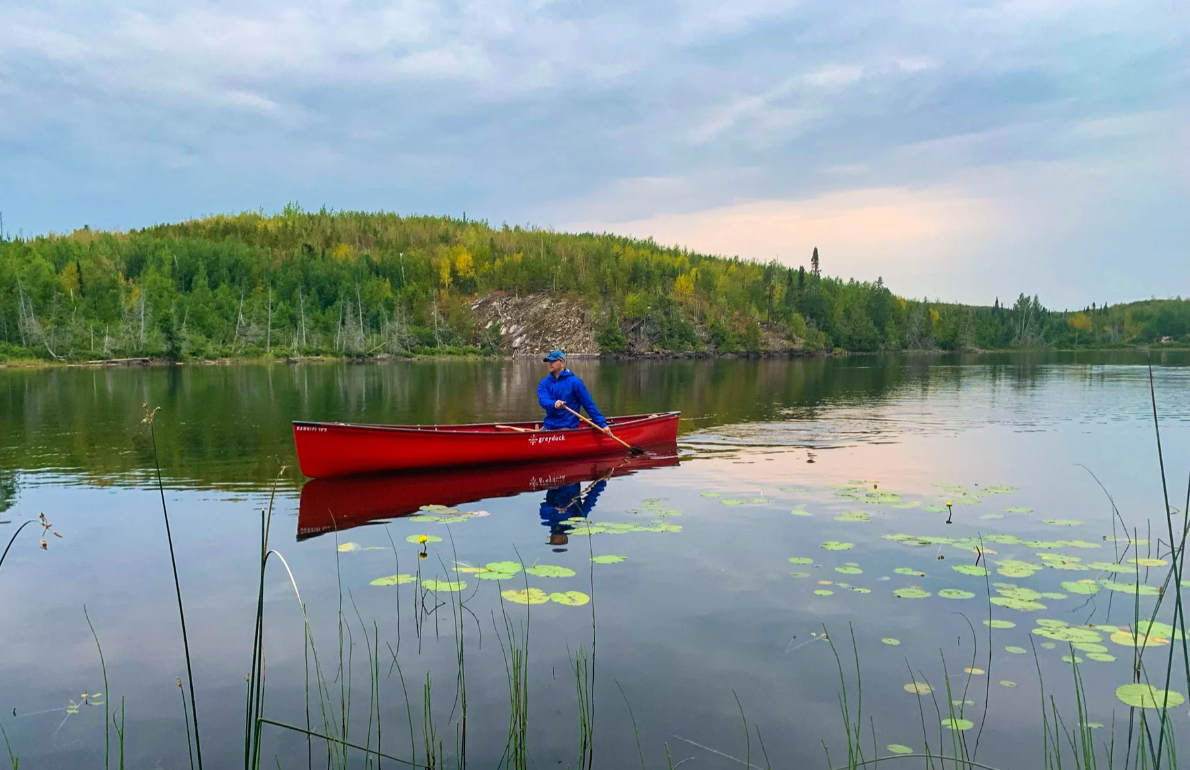Planning for the Boundary Waters Canoe Area
With spring fast approaching we’re starting to dream about the Boundary Waters…
The Boundary Waters Canoe Area is in the northern third of the Superior National Forest in northeastern Minnesota (what we call our backyard). More than 1 million acres, it extends nearly 150 miles along the international boundary adjacent to Canada’s Quetico Provincial Park and is bordered on the west by Voyageurs National Park.
The area contains more than 1,200 miles of canoe routes, 12 hiking trails and more than 2,000 designated campsites. Wilderness offers freedom to those who wish to pursue an experience of expansive solitude, challenge and personal integration with nature. Because this area was set aside in 1926 to preserve its primitive character and made a part of the National Wilderness Preservation System in 1964, it allows visitors to canoe, portage and camp in the spirit of the French Voyageurs of 200 years ago.
Great glaciers carved the physical features of what is today known as the Boundary Waters Canoe Area Wilderness by scraping and gouging rock. The glaciers left behind rugged cliffs and crags, canyons, gentle hills, towering rock formations, rocky shores, sandy beaches and several thousand lakes and streams, interspersed with islands and surrounded by forest. We recognize that this land was initially home to the Anishinaabe People (also known in this region as Chippewa or Ojibwe). Anishinaabe people (also known in this region as Chippewa or Ojibwe) continue to harvest wild rice in the Boundary Waters region and maintain treaty rights to hunt, fish and gather.
In this article, we’re going to cover some of the basics to consider when planning a trip to this stunning area.
Pre-Trip Planning
Before your trip you should make sure all your gear is in good shape, items are repaired and logistics:
Permits: Permits are required year-round for all visitors to the Boundary Waters. From May 1st through September 30th the Forest Service utilizes a daily quota system to help ensure that there aren’t too many people entering one area at one time. A weekly quota system is used for motorized craft. These permits are required when staying overnight or when using a motorized craft during the day. One person can get one permit per day, either online or by calling 1-877-444-6777. These permits are available on a first come, first served basis.
Self-issued permits are required for day users, motorized day use of Little Vermillion Lake, or for overnight users visiting between October 1st and April 30th. Simply complete the form at the entry point’s kiosk, or stop by a Superior National Forest Office.
DNR Review: Review current fishing, hunting and watercraft regulations to ensure equipment meets the requirements set by the Minnesota Department of Natural Resources (or “DNR”). If you are renting equipment, make sure your vendor is meeting current standards.
LNT Review: Review the seven principles of Leave No Trace (or “LNT”) - especially planning ahead and preparing. What entry points will you use? What gear are you bringing? Who’s going with you and what skills do they have? Be sure to leave a trip itinerary with a loved one who can contact the authorities if needed.
Bring the Essentials: Review the 10 Essentials and ensure you have gear that can support you in an emergency. In the Boundary Waters especially, cell service is spotty and unreliable whereas satellite devices work great. We recommend buying one for those who use it regularly, as the fees for maintaining satellite connection can be spendy for an occasional user. Otherwise, find someone to rent one from.
Gear Prep: In another article we’ll explore the various setups folks tend to utilize while on a trip to the Boundary Waters. Here we’re going to focus on maintenance. If you’re bringing your own boat, be sure to thoroughly inspect it beforehand and complete any needed repairs. Test your stove and your water filter to ensure they’re working properly. Review your maintenance kit to ensure you can solve any problems that may arise during the trip. A few items we’d recommend include:
Duct tape - a magic tool capable of solving many problems.
Patch kit - we hope nothing happens to your boat, but…
Paracord and carabiners - separately, they’re helpful; together they’re really helpful.
Tent repair supplies - bring things for the tent fabric, poles and connections points.
Bag repair supplies - bring spare buckles and extra webbing.
Trip Logistics
During the trip it’s important to constantly monitor the wind, waves and weather. Prepare backup itineraries in case conditions change. We plan to explore this topic more in a future post, but here are some key factors to consider:
Dress for Present and Predicted Weather Conditions: Leave the cotton at home in favor of quick-dry materials and items that repel water, even in summer. And don’t forget to think about your feet - certain portages and landing points are deep, and you never know what kind of rocks are lurking below. For risk management reasons we recommend close-toed shoes like Muck Boots or XtraTuf. (For our friends who prefer sandals, we get it! Just be careful.)
Know Your Surroundings: Bring and familiarize yourself with a map and compass. Many maps these days are waterproof and will survive a dip in the lake, your GPS or satellite device might not. We recommend bringing a map and compass as your primary means of navigation, and have a GPS or satellite device available as a backup. Need to brush up on your navigation skills? We like the book Be Expert with Map and Compass.
Prepare for Critters: Bears can and have relieved groups of their food, but don’t discount the mice and the squirrels. The Superior National Forest has shared a few articles about managing food, but we like this one that reviews various things to consider and strategies for success. We’d also recommend taking a look at the latest order from the forest service regarding food storage so you can maintain compliance. (Practice your food setup in advance to save time!)
Bug Off! Don’t forget to plan for how you’re going to manage the mosquitos, and check yourself for ticks regularly. We sell all sorts of bug repellant, bug-protective clothing and after-bite care at our retail store.
Plan for Your Pup. If you plan on bringing your dog to the Boundary Waters, don’t forget to pack their essentials. Bring plenty of food, a water bowl and a dog bed. Have them haul it with a dog backpack. Be sure to review the guidelines from the Forest Service regarding dogs - especially waste management.
Post-Trip Projects
Afterwards, you may be tempted to drop off your gear and hit the showers or a local restaurant. While we understand how tiring a trip to the Boundary Waters can be, we’d highly recommend dealing with your gear first. Take out your tents and set them up so they can air out. Hang your life jackets (or Personal Floatation Devices, or “PFDs”), wet gear and other items on a dry line. Toss your clothing in the wash. Disassemble your water filter and rinse it out to reduce clogging. Leaving your used gear for a day, a night or longer can result in unpleasant side effects, such as lingering bad smells or worse.
By dealing with everything right away you can help ensure your gear lasts the test of time. (And depending on how long it takes to get home, it saves everyone a smelly ride home.)
Still Have Questions?
No problem. The team here at Stone Harbor Wilderness Supply is always happy to help. We plan on creating three more articles dedicated to each phase of your trip: Before, During and After. You can sign up for our newsletter to get notified when this information becomes available on our Home Page.
Otherwise you can always Contact Us with questions. Want to learn more about what we rent? Click here.


